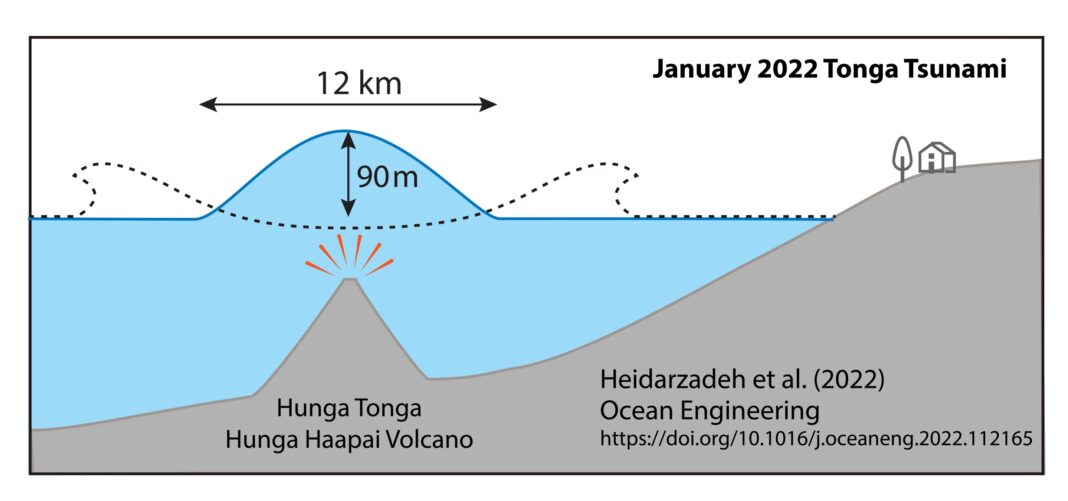The initial tsunami wave created by the eruption of the underwater Hunga Tonga Ha’apai volcano in Tonga in January 2022 reached 90 metres in height, around nine times taller than that from the highly destructive 2011 Japan tsunami, new research has found.
An international research team says the eruption should serve as a wake-up call for international groups looking to protect people from similar events, claiming that detection and monitoring systems for volcano-based tsunamis are ’30 years behind’ comparable tools used to detect earthquake-based events.
Dr. Mohammad Heidarzadeh, secretary-general of the International Tsunami Commission and a senior lecturer in the University of Bath’s Department of Architecture & Civil Engineering, authored the research alongside colleagues based in Japan, New Zealand, the U.K., and Croatia.
By comparison, the largest tsunami waves due to earthquakes before the Tonga event were recorded following the Tōhoku earthquake near Japan in 2011 and the 1960 Chilean earthquake, reached 10 metres in initial height. Those were more destructive as they happened closer to land, with waves that were wider.
Dr. Heidarzadeh says that “the Tongan tsunami tragically killed five people and caused large scale destruction, but its effects could have been even greater had the volcano been located closer to human communities. The volcano is located approximately 70 km from the Tongan capital Nuku’alofa — this distance significantly minimized its destructive power.”
The research was carried out by analyzing ocean observation data recordings of atmospheric pressure changes and sea level oscillations, in combination with computer simulations validated with real-world data.
The research team found that the tsunami was unique as the waves were created not only by the water displaced by the volcano’s eruption, but by huge atmospheric pressure waves that circled around the globe multiple times. This ‘ dual mechanism created a two-part tsunami — where initial ocean waves created by the atmospheric pressure waves were followed more than one hour later by a second surge created by the eruption’s water displacement.
This combination meant tsunami warning centres did not detect the initial wave as they are programmed to detect tsunamis based on water displacements rather than atmospheric pressure waves.
The research team found that the January event was among very few tsunamis powerful enough to travel around the globe — it was recorded in all world’s oceans and large seas from Japan and the United States’ western seaboard in the North Pacific Ocean to the coasts within the Mediterranean Sea.
https://phys.org/news/2022-08-tonga-volcano-eruption-metersnine-taller.html


